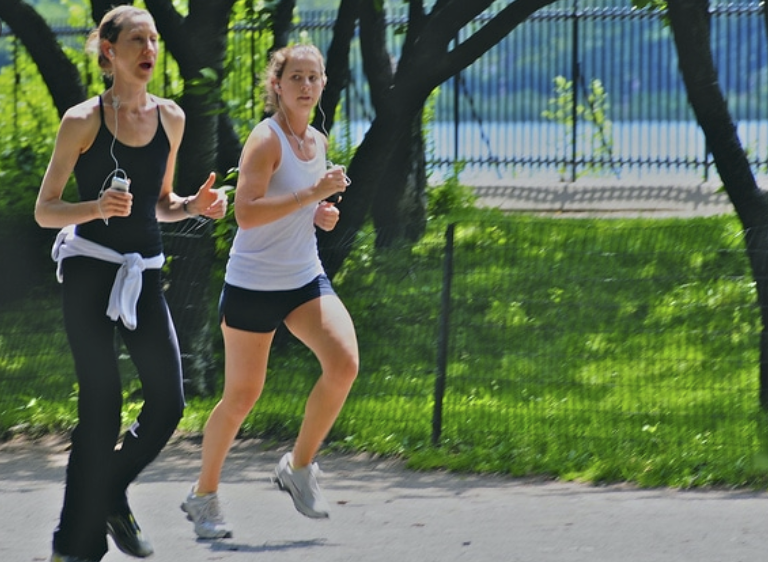Adjust your breathing position
To maximize respiration, to help you feel comfortable when running, the runner should keep the head in line with the spine, making sure not to descend or point forward. Then relax your shoulders, avoiding stooping or bending.
Breathe rhythmically
Every time the foot touches the ground, the force of the impact can put stress on the body. To avoid muscle imbalance, put less pressure on the diaphragm, the runner should alternate breathing while lifting and lowering the right leg and left leg.

To do rhythmic exercises, work on a 3: 2 pattern (inhale for 3 beats and exhale after 2 beats). Running at a faster speed you can use a 2: 1 model. However, if feeling too complicated, the runner only needs to pay attention to the breath to know which rhythm is most comfortable and suitable.
Breath the clean air
Clean air helps keep lungs healthy and respiratory system easier. So, if you plan to go for a jog outdoors in a polluted urban area, choose a time when traffic is less congested, avoid crowded roads to have an open space to practice.
Change how you exercise in bad weather
Some weather conditions such as cold, low humidity air can cause respiratory problems. On such days, you can run indoors, or cover your mouth and nose with a towel if you still want to exercise outside.
Warm-up and cool down
People with asthma need a warm-up, to give them warm time, to give their lungs a chance to start working. After running almost finished, the runner should relax gently to help cool the lungs.

In addition, pollen is also a trigger for asthma attacks, if the runner is having difficulty breathing, the runner should carefully check, avoid the time and area where pollen appears.
When should I see a doctor?
If you have never exercised or are taking medication to treat your illness, seek a doctor’s advice for detailed advice. People with asthma or chronic obstructive pulmonary disease should be careful, seek medical attention if breathing is difficult or short of breath, gasping or wheezing at a run.
The key to breathing training is not just doing it while running, but it should be maintained at other times of the day. You should remind yourself to breathe evenly, observe breathing in different situations or activities to understand the body and make timely adjustments to ensure your health.
